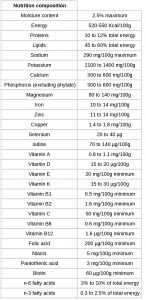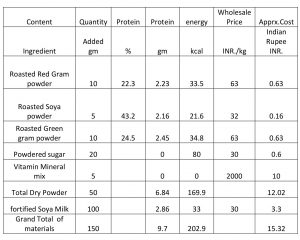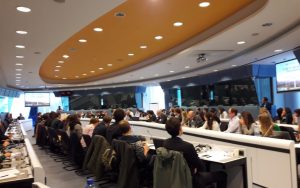Extended monopoly protection by the Regulation EC 469/2009 concerning the supplementary protection certificate (SPC) mechanism for medicinal products has led to spiralling prices in Europe for lifesaving medicines, while exhausting the national budgets and depriving patients of fair access to treatments. The EU Commission should repeal the SPCs and put in practice the recommendations signed on 8 September 2017 by thirty-three civil society organisations, in alignment with the final report of the UN High Level Panel on Access to Medicines

By Daniele Dionisio*
Head of the research project PEAH – Policies for Equitable Access to Health
EU to Get Rid of Big Pharma-friendly SPCs
As reported, the main reasons for high drug costs in recent years have been the continuous increase (up to 10 percent at least year by year) ‘’in prices for existing on-patent drugs, which account for more than 70% of all drug spending, and the six-figure retail prices set for the latest generation of specialty and cancer therapeutics.’’
In Europe, the prices for new medicines on the market have skyrocketed over the past decade, putting EU governments in a search for new steps to turn the tide. Just for example, sofosbuvir, a breakthrough Gilead product for hepatitis C treatment, was rolled out at prices beyond the grasp of EU countries’ public budgets, resulting in sofosbuvir rationing in some cases. Italy has exceptionally gone against the trend and allowed hepatitis C patients to import cheap Indian sofosbuvir generic copies.
Under these circumstances, following a request by the European Council in June 2016, the European Commission is currently reviewing the Regulation EC 469/2009 concerning the supplementary protection certificate (SPC) for medicinal products as a mechanism prolonging exclusivity and monopoly rights for originator pharmaceutical companies.
As a matter of fact, such an extended monopoly protection beyond new medicines’ 20-year patent term has undermined access to affordable generic drugs and biosimilars in Europe and led to unbearably spiralling prices of medicines for HIV/ AIDS, cancer and hepatitis C treatment.
In a nutshell, by stifling generic competition, SPCs keep up extortionate drug prices while exhausting earmarked national budgets for health and depriving patients of fair access to lifesaving treatments.
The introduction of SPCs was justified in order “to meet the innovative pharmaceutical concern that they were no longer given a fair opportunity to recover their Research and Development efforts and investments.” As such, a question arises about the real cost to develop a prescription drug, where featured estimates of $4-11 billion and $2.56 billion were released in recent years by Forbes and the Tufts Center in Boston, respectively.
In the face of this, opponents challenged the figures above and defended the notion that a new drug can be developed for a fraction of the cost the Tufts report suggests.
Indeed, current experience supports that new drugs can be developed for as little as $50 million (or up to $186 million by taking failure into consideration). According to a September 2017 commentary in JAMA (Journal of the American Medical Association), the actual cost of developing a new drug would be approximately one-fourth the Tufts study estimate.
This is without prejudice to the evidence that routine R&D expenses are lower than company overheads, including marketing costs. And often after-tax profits largely exceed those high R&D costs the corporations allege. As recently reported, yearly spending on share buybacks and dividend payments is in many cases far higher than corporations’ investments in R&D.
What’s more, since innovation costs money and patent monopoly enables industry to keep prices as high as the market can bear, Big Pharma is engaged in rolling out non-stop newly patented variations on existing drugs (the so-called “evergreening”) that offer no added therapeutic benefit but demand less in terms of time, cost and risk. These drugs are the main output of R&D so far.
In other words, instead of genuinely engaging in new drug development, the pharmaceutical industry invests in adding on to the list of already existing, effective treatment solutions. As a rule, ‘me-too’ drugs are exceedingly priced as well, sadly leading to the awareness that imitation, not innovation, is rewarded under the current patent regime.
SPCs are in fact evergreening strategies because once a single company has patented minor changes to an existing medicine, the same company will expectedly apply for an SPC on those minor changes, so extending its monopoly while avoiding the risk of generic competition.
As such, SPCs add to the feeling that end-users would fork out more money to finance marketing campaigns and profits of Big Pharma than to back genuine research of new drugs.
Another justification for introducing SPCs was that “the period that elapses between the filing of an application for a patent for a new medicinal product and authorisation to place the medicinal product on the market makes the period of effective protection under the patent insufficient to cover the investment put into the research.” This rationale is hardly acceptable, however, since, as contended, any delay in regulatory approval attributable to shortcomings in regulatory agencies’ capacity or resources should be tackled by strengthening them and their means, rather than resorting to an SPC mechanism.
And there is more. SPCs combine frequently with expedients securing further prolonged market exclusivity if applicants meet definite obligations. As would be the case (article 36 paragraph 1 Regulation EC No 1901/2006) for an additional six month extension exclusivity period granted to ‘’the holder of the patent or SPC for the results of all studies conducted in compliance with an agreed paediatric investigation plan’’.
Based on all points above, it comes as no surprise that on 8 September, 33 civil society organisations – including MSF, HAI, Oxfam, Wemos, UAEM Europe and EATG among others – signed and sent a well-documented letter to the Commission recommending them to:
-abolish the SPC mechanism
-improve transparency, flexibility and public health impact assessment in the current SPC review process
-stop encouraging the inclusion of SPCs – or similar mechanisms, such as patent term extensions – in free trade agreements with other countries.
In the event SPCs remain, the signatories asked the Commission to:
-allow third-party observations during the examination procedure for SPC applications and an opposition procedure, open to anyone, after an SPC is granted
-improve transparency of market exclusivity status by creating “an easily searchable public database for consumers, procurement agencies, civil society organisations and governments to identify SPCs that have been awarded and the delays to generic competition that such SPCs will cause.”
The success rate of these meaningful recommendations is unpredictable in these times of unfettered trade liberalization in which, as maintained by AE Byrn, Y Pillay and TH Holtz in their Textbook of Global Health (2017 edition, Oxford University press): ‘..the exigencies of market competition and enormous corporate power mean that governments privilege economic priorities and corporate interests over social and environmental needs, even in settings where democratic institutions and decision-making processes are marked by integrity and representativeness…’
This context seemingly bodes ill at a time when the European authorities are doing almost nothing to check the tide of ‘me-too’ drugs, the European Medicines Agency keeps testing new medicines only in terms of safety and efficacy compared with a ‘pretend’ drug, while pharma companies and their allies are lobbying policy decision makers to scupper any rules that would force them to disclose the real R&D costs and profits of their medicines and the rationale for charging what they do.
Yet, the aforesaid recommendations matter as an authoritative voice hammering home the point that non-stop engagement worldwide is needed to pressure governments into implementing equitable measures for health.
By taking this into account, and for all highlighted here, the European Commission should repeal the Regulation EC 469/2009. Otherwise, they would disregard the European Council’s recognition (17 June 2016, paragraph 19) of “the importance of timely availability of generics and biosimilars in order to facilitate patients’ access to pharmaceutical therapies and to improve the sustainability of national health systems.”
Coherently, the Commission should put in practice the recommendations above in the wake of, and in alignment with, the requests laid down one year ago by the United Nations High Level Panel on Access to Medicines in their final report serving as a cornerstone, under the UN 2030 Agenda perspective, for all decisions regarding the fair access to treatments and care – and not just at a poor country level.
Relevantly, the Panel called for WTO members to comply with and globally implement the WTO Doha Declaration on TRIPS (WTO Agreement on Trade-Related Aspects of Intellectual Property Rights) and Public Health. This includes facilitating the issuance of compulsory licences, rejecting the so-called evergreening of patents, restricting patents to genuine inventions only, and refraining from patent term extensions.
The report contended that “Governments should require manufacturers and distributors of health technologies to disclose to drug regulatory and procurement authorities information pertaining to:
(1) the costs of R&D, production, marketing and distribution of health technology being procured or given marketing approval with each expense category separated; and
(2) any public funding received in the development of the health technology, including tax credits, subsidies and grants.”
In addition, the WHO was invited to establish and keep up an “accessible international database of prices of patented and generic medicines and biosimilars in the private and public sectors of all countries where they are registered.” At the same time, governments were asked to establish, preserve and update publicly accessible databases with patent information status and relevant figures to drugs and vaccines.
———————————————-
*article originally published in Intellectual Property Watch https://www.ip-watch.org/2017/10/18/eu-get-rid-big-pharma-friendly-spcs/
Daniele Dionisio is a member of the European Parliament Working Group on Innovation, Access to Medicines and Poverty-Related Diseases. Former director of the Infectious Disease Division at the Pistoia City Hospital (Italy), Dionisio is Head of the research project PEAH – Policies for Equitable Access to Health. He may be reached at d.dionisio@tiscali.it http://www.peah.it/ https://twitter.com/DanieleDionisio https://www.linkedin.com/in/daniele-dionisio-67032053










